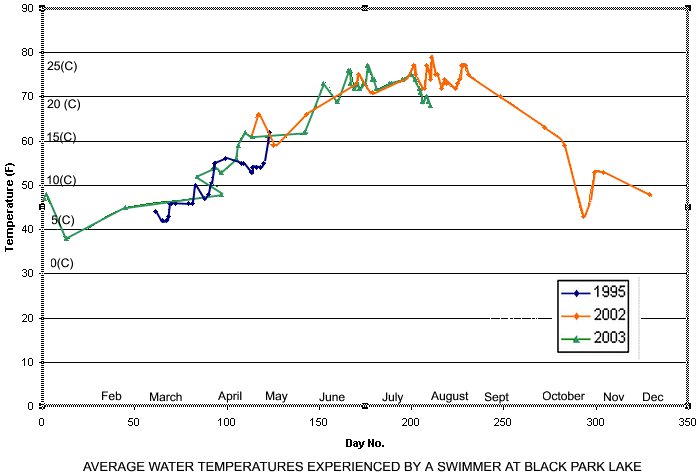|
THA DANGERS IN THE WATER - THE LIES AND THE STATISTICS 
 |
|
From listening to the radio or watching TV you might get the impression that up to 450 people
drown while swimming in rivers or lakes every year. You would be very wrong. Read on to find out why.
Between 12 and 14 climbers die every year on Snowdon and
in the adjacent Ogwen valley alone. On average more than 2 people lose their lives in the TT Races on the Isle of Man.
This figure rose to 4 in 2005.
By comparison RoSPA lists 22 boating deaths, 9 sub-aqua and 20 in vehicles. However from listening to the radio or watching tv you might get the impression that not 25 as shown above, but 175, or even 450 people drown while swimming in rivers or lakes every year. You would be very wrong. The truth, as you can see, is nothing like either of these figures. The 450 figure (427 in 2002) is of course the total drowning figure. The 175 figure refers to river drownings and again it is a total figure covering all activities. However, in addition to the above there were 17 who drowned after "Jumping in" out of which 4 had consumed alcohol. Neck injuries: About 30 people (mostly 25 year old males) a year break their neck in "diving" accidents. Once again this is a coverall figure. We have to guess at river & lake situations: say 10. Very nasty. Don't, don't dive, or if you must then go & check out the water first of all. Every drowning is a tragedy. Don't become a statistic yourself. 95% of the "Swimming" drownings were male. Beware of alcohol, bravado, carelessness, & recklessness. It can so easily lead to tragedy. |
'Inland water in this country does not heat up' [Roger Vincent Water safety spokesman RoSPA June 2005]

Click here for 2008 data from other regions. 2007 2006 2005
Get your favorite Lake modelled:
|
'Weil's disease is the secret weapon of whatever dark forces are
opposed to wild swimming' Roger Deakin Waterlog 2000:113 |
In the three year period between 1999 and 2001 there was one death from Weil's disease in England and Wales and a total of five from all Leptospiral infections. The frequent use of the risk posed by Weil's disease to frighten people off swimming in rivers and lakes is, by any stretch of the imagination, a wild scare story.
|
Weil's disease is one of a group of leptospiral bacterial infections commonly known as Leptospirosis. It is caught mainly
when open wounds come into contact with animal urine including dogs and cattle. This can be in water or dump soil. The
symptoms are often mild except when the person infected is already in poor health. However, Weil's disease, the most
serious form of the disease, can be fatal even when caught by an otherwise healthy person. Leptospirosis is a notifyable
disease which means that cases are logged by the Department of Health. England and Wales [1990-1995]
| ||||||||
|
We need go no further than to point out that Weil's disease is rare. The risk of it being fatal
is negligible and, as the table above indicates, it is not directly associated with swimming or any summertime water
sports (hardly a peak during the summer months). Indeed, those mostly at risk are farm workers. Ironically we find Weil's disease a very useful campaigning tool - whenever an opponent mentions the danger of contracting the disease while swimming we know that he is arguing from a position of ignorance. |
|
Still being 'warned' about the danger of contracting Leptospirosis?
Read this: "Due to the fact that the rates of leptospirosis are very low in England and Wales, there is no reason why you cannot participate in freshwater recreational activities, such as swimming, sailing, water skiing or windsurfing. However, if you are regularly involved in freshwater activities, it is a sensible precaution to cover any cuts and grazes with a waterproof dressing. Shower or bathe after your activity." Copied from the NHS website: More... |
Blue-green algae (BGA) is another favourite with those looking for excuses
to ban swimming in their waters. BGA is a cyanobacteria - an organism which has properties of both bacteria and
plants. Algae bloom of one variety or another is a common phenomenon in the lakes and rivers of lowland Britain during
mid summer and early autumn. The hazards to swimmers can be summarised as follows:
|
